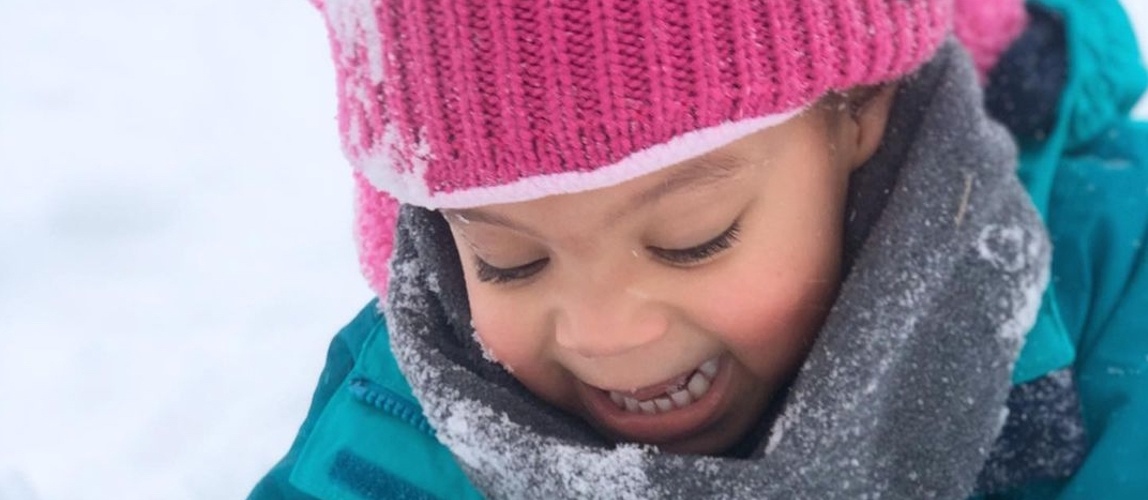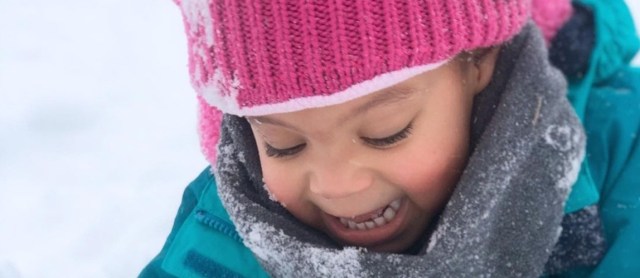
By design, winter is a time of rest for the natural world. Plants and animals in all different climates slowdown in winter and benefit from the chance to restore. Even most cacti won’t set flowers if they do not get their winter break.
Winter also offers unique sensory experiences that, when you slow down to take them in, are inspiring and enriching for all ages. Even through a quick stretch to delight in nature when it’s terribly cold out, we grow more resilient when we learn to manage challenging conditions—something we’re finding kids struggle with more and more.
Increasingly, misconceptions have rebranded winter as the season to stay indoors. On the surface it makes sense—animals hibernate, so humans follow suit and stick inside the house. But, no matter how animals rest in winter, they are never disconnected from nature—they simply shift their approach. Nature remains where they belong, and it’s where we belong too.
We can’t afford to keep our kids indoors and inactive. Studies show that kids today spend, at best, anywhere from 70% to 50% of the time we did outdoors. Kids have lost 12 hours of playtime out of each week since 1970—that is a huge loss and a big chunk of their waking hours. As a nation, we gave ourselves a D- on our US Report Card on Physical Activity for Children and Youth with more than ¾ of our kids failing to get the minimum required daily physical activity.
Worse yet, the increase in sedentary, indoor lifestyles coincides with increases in many chronic childhood health conditions, including childhood obesity, asthma, attention deficit disorder, and vitamin D deficiency. Kids have already lost so much time for healthy play outdoors; how can we take 25% of what is left, away, by eliminating an entire season?
Plus, for many of us, being outdoors is how we will safely see the people we love this year—and that means we’ve got to get out there!
There is so much reason to hope, and the answer is right outside our doors. While alarming trends continue to increase, the evidence that exposure to nature and play directly benefits health continues to mount.
Here are just a few of the wellness benefits of outdoor play:
- Kids who spend more time outdoors are more physically active, and there is no shortage of research that physical activity drives positive health outcomes.
“To be healthy, children need several hours (not minutes!) of movement a day—preferably outdoors, where the senses are fully alive and their bodies are free to move in many different ways.”—Angela Hanscom
- Doctors also know daily doses of fresh air and sunlight increase circulation, vitamin D, boost immune systems, and promote overall wellness. We parents know it too when we look happy kids who sleep soundly and just look healthier.
- Time spent in natural settings also contributes to healthy sleep patterns in babies, toddlers, and kids. And proper sleep drives all kinds of beneficial health outcomes.
- Kids who spend time outdoors get sick less often. The perception that you’ll catch a cold outside is just plain wrong. Stagnant, indoor environments are breeding and sharing grounds for all kinds of germs, and some studies show that being cold may even trigger the immune system.
- Nature and play lower stress. Time spent in natural settings is restorative and reduces anxiety for kids and for adults. Children are particularly vulnerable to the impact of stress and stress hormones, and this time is extra stressful on us all. Plus, if you can join your kids, your stress will reduce too, making it easier to provide a more supportive environment for kids.
- Joy: Learning to find and experience the joy that nature and play provide is another way to provide children with an enriching, positive emotional experiences in the short term. If we can engrain that joy practice for them, they can carry forward this powerfully positive way of being in the world.
- Playing in the cold gives kids the opportunity to learn that they can manage when life gets a little challenging. They get the message that they have the resources to persist and make the best of what life hands them. There may not be two more important capacities kids need for long term wellness than grit and resilience, so that is a lesson we can’t afford to miss out on.
Onboard with cold-weather outdoor play? Commit to winter outdoors by trying to get outside every day this winter, even if just for a little while. To truly build outdoor play into your winter routine make sure you’re signed up for our mailing list to receive weekly play breaks—5 minute ideas that will lead to hours of purposeful play outdoors this winter. Or, check out our Tinkergarten classes with a curriculum, designed to fill your weeks with outdoor play and build kids’ Problem-Solving skills this winter.
And spread the word! If we all flood social spaces with images of healthy, active time spent playing outdoors this winter, we will shift culture and counter misconceptions. We’ll help you amplify your efforts too—post about your winter play experiences and join our #OutdoorsAll4 Facebook Group—a perfect place to connect with thousands of caregivers, educators, and Tinkergarten Leaders all working to build purposeful outdoor play into their routine.
Don’t forget to include a great “come back inside” practice. Think hot cocoa, blankets, warm socks on the radiator. Make “returning to coziness” a part of being outdoors. It’s a part that we can easily nail, that kids love and that they start to associate with the joy of being outside.
